Key Takeaways:
- Testing your hearing is a part of your overall health. Fortunately, there are many easy online screening tools.
- We've reviewed several online tests (see below).
- All you need is an internet connection, a pair of headphones, and a quiet environment to take the test.

Like many people with hearing loss, I waited years for my first test. Part of the hold-up was my hesitation to get in a room with an audiologist where I knew I would be told I needed hearing aids. That felt like a big step.
I later realized that online hearing tests are surprisingly accurate and offer instant results from the comfort of home.
Online hearing tests are not infallible, but they can be a helpful starting point in the process of addressing hearing issues.
In preparation for this guide, our team tested more than 20 hearing tests and measured their results against professional sound-booth test results.
Keep scrolling for our five favorites.
Results With Custom Video
- Simple test interface with clear results
- Each result comes with a custom video about your hearing loss
- This test takes around 10 minutes to complete
- This test requires headphones
- The test requires an email address
Interactive Chart Results
- Designed by audiologists and sound engineers
- For best results wear headphones
- Simple user-interface with clear results
Effective Test With Headphone Calibration
- Hearing test includes a severity chart
- Simple hearing loss explanations
- Test takes around 8 minutes to complete
- Requires headphones and an email address
Prepare for your at-home test.
It is crucial to set up the test correctly by using good-quality headphones, finding a quiet space, and using a phone or computer.
We don't recommend taking the tests below directly through your computer speakers.
Any good pair of earbuds or headphones (Bose, Airpods, JBL, Sony, etc.) should work for each test below. Ensure your headphones are in good working condition and connected to your computer or phone before you begin.
Find the quietest place you can find in your home. Traffic noise, appliances, and air conditioning can be some less obvious sources of background noise. Our team used a walk-in closet for a lot of the testing process.
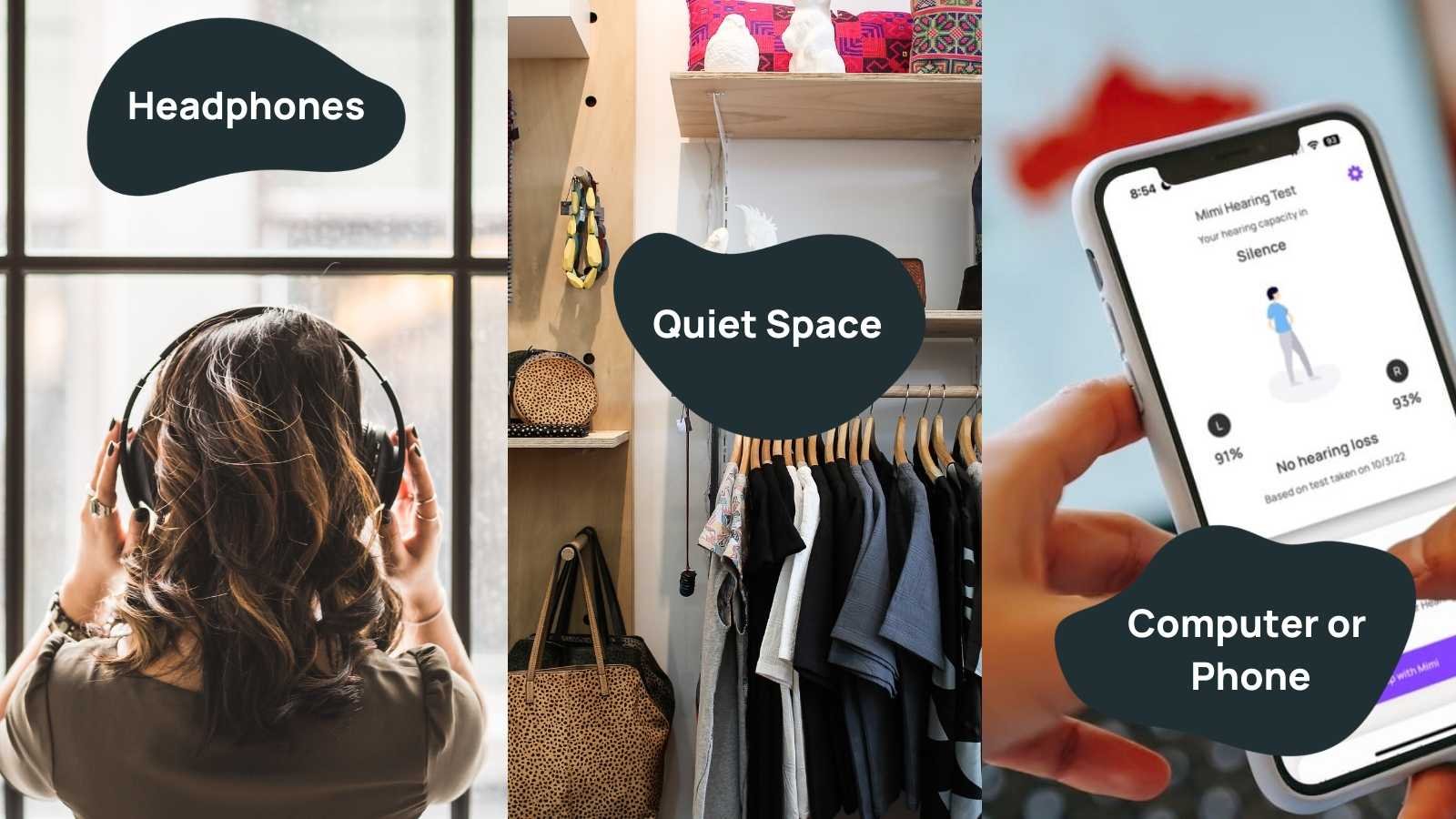
With that out of the way, let's jump into our top six online hearing tests.
Summary of Results
Here's a summary of our favorite online tests. Keep scrolling for a full breakdown of each (along with screenshots).

#1. Jabra Enhance - Best Overall
We like the custom video results.
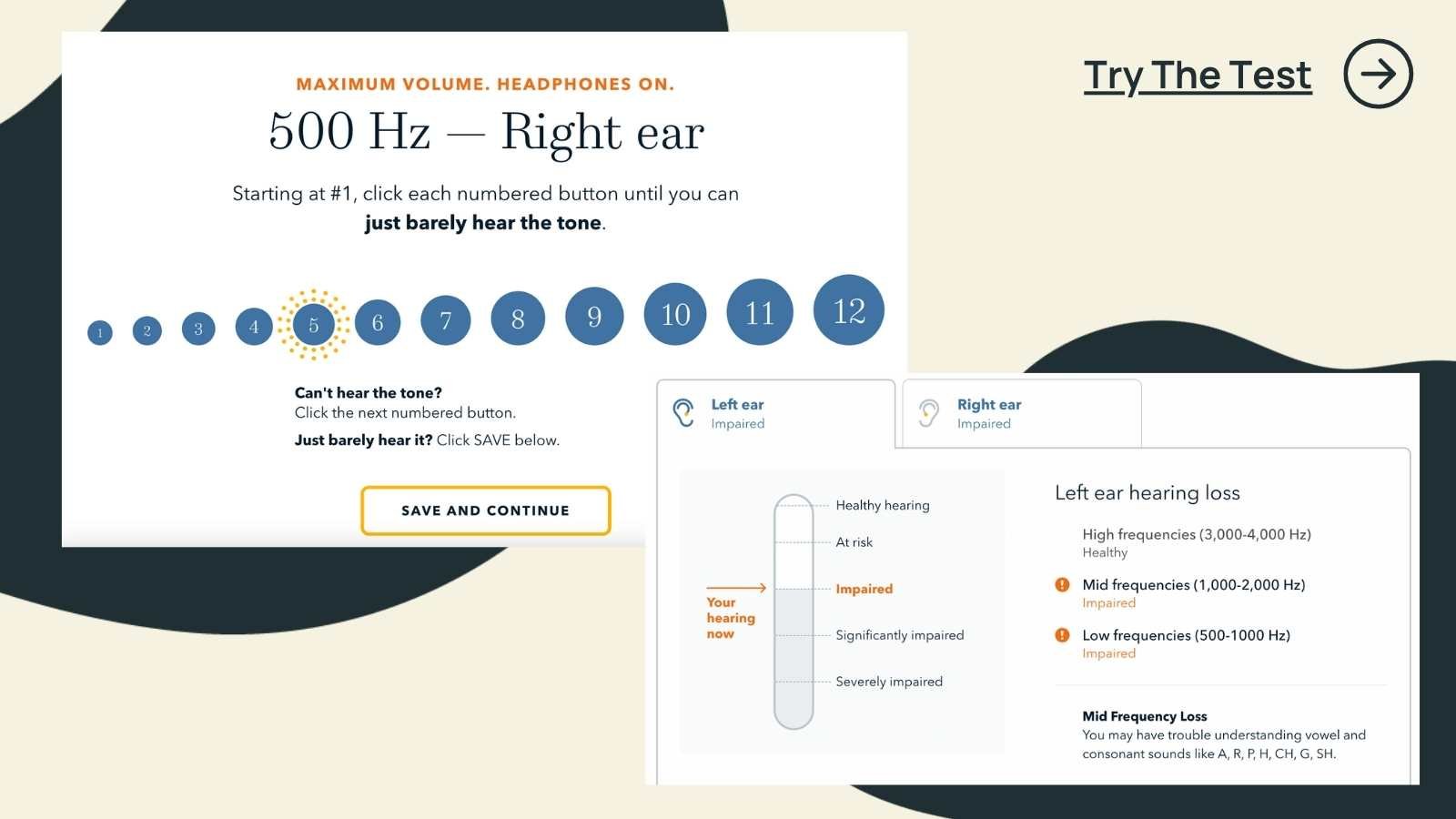
Jabra Enhance Plus is a well-known hearing aid brand that offers remote programming and home delivery of its products. As a company that specializes in remote testing and care, their online hearing test is top-notch.
The interface is straightforward and involves increasing the volume until you can hear each tone. In addition to providing detailed information about your hearing loss, Jabra's test also includes a personalized video based on your test results.
If you are interested in learning more about your hearing loss, it is worth giving Jabra's test a try.
Try The Jabra Enhance Test

#2. Eargo - Best Sound Calibration
We like the built-in sound calibration process and questionnaire.
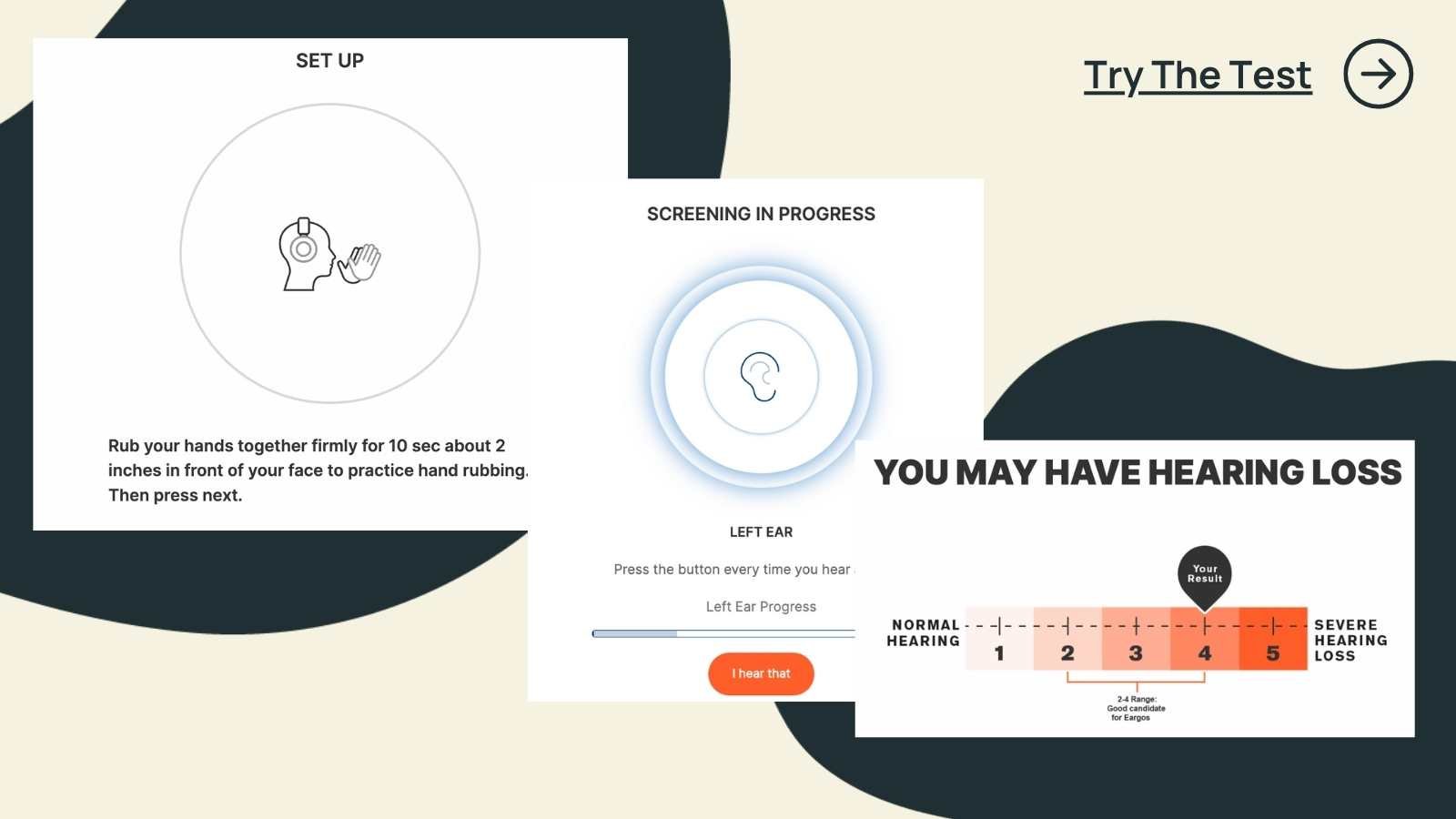
Before you begin the test, Eargo prompts you to rub your hands together and calibrate a sound in your headphones to match. This step ensures that you have your volume at the right level.
The test asks a series of lifestyle questions that might help you understand your hearing loss. Eargo then plays a series of tones to test the softest sounds you can hear.
The final hearing test result is a simple chart that categorizes your hearing loss as mild, moderate, severe, or profound. This test does not give you a traditional audiogram chart, but it does provide an understandable overview.
Try The Eargo Test

#3. Audicus Most In-Depth Test
We like the in-depth approach.
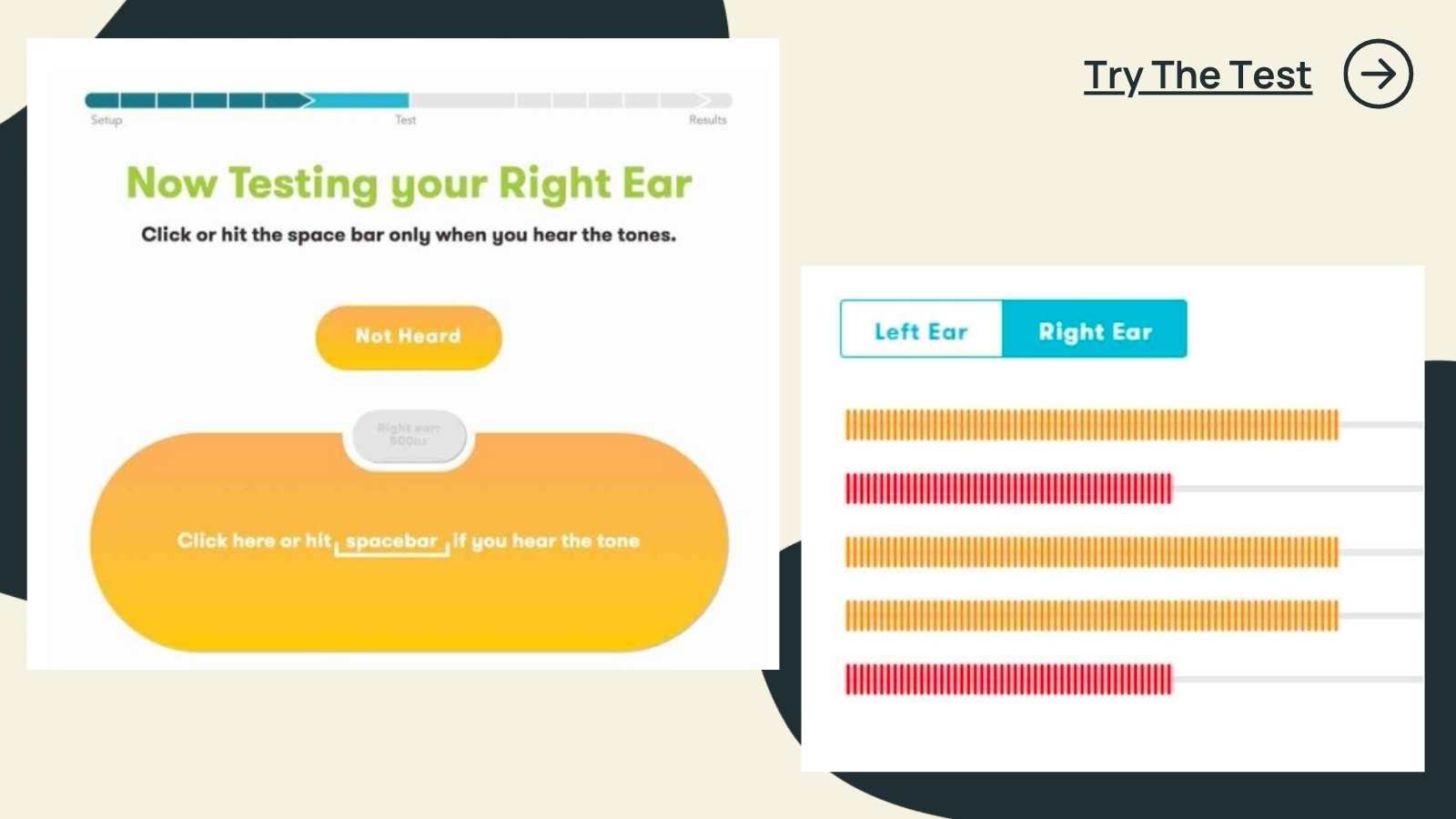
The Audicus test is more robust than most (takes 10-15 minutes) and was custom-built by their team of audiologists and neuroscientists over two years. The test has a simple user interface that asks the test taker to hit the space bar each time they hear a sound. The results do not include a traditional audiogram chart, but they do give good data on each ear, and the results were accurate compared to other tests.
Try The Audicus Test

#4. Soundly - Best User Experience
We like the interface and audiogram style chart.
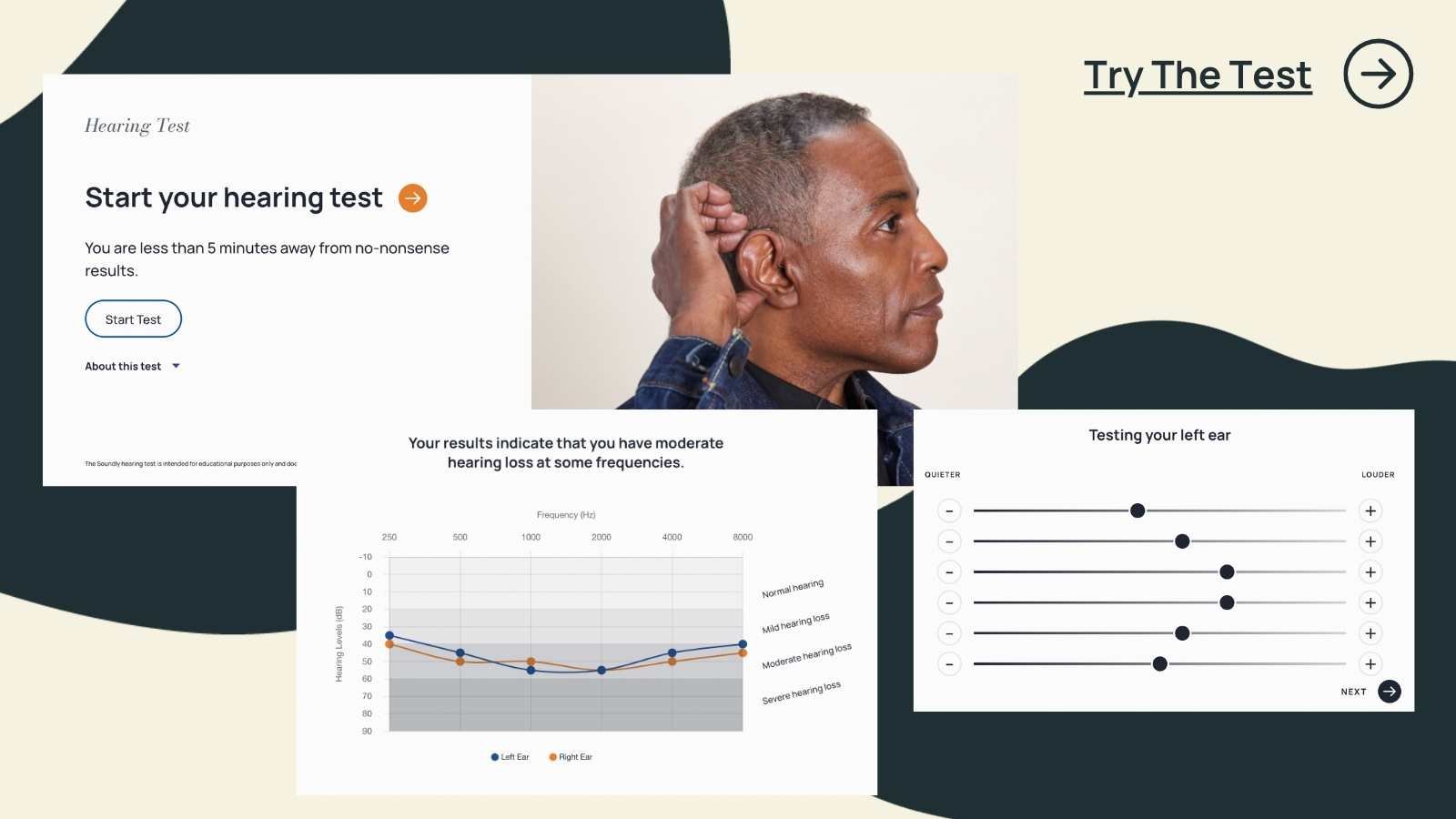
After trialing every online hearing test we could find, we felt some things were still missing. Specifically, we wanted a simple interface that returned an audiogram-style chart that matches what you get at an audiologist.
The Soundly test was built in collaboration with sound engineers, designers, and audiologists. The test has been featured in the LA Times, Forbes, and CNET. We hope you find it useful!
Try The Soundly Test

#5. Mimi - Best Hearing Test App
We like the Apple and smart TV integrations
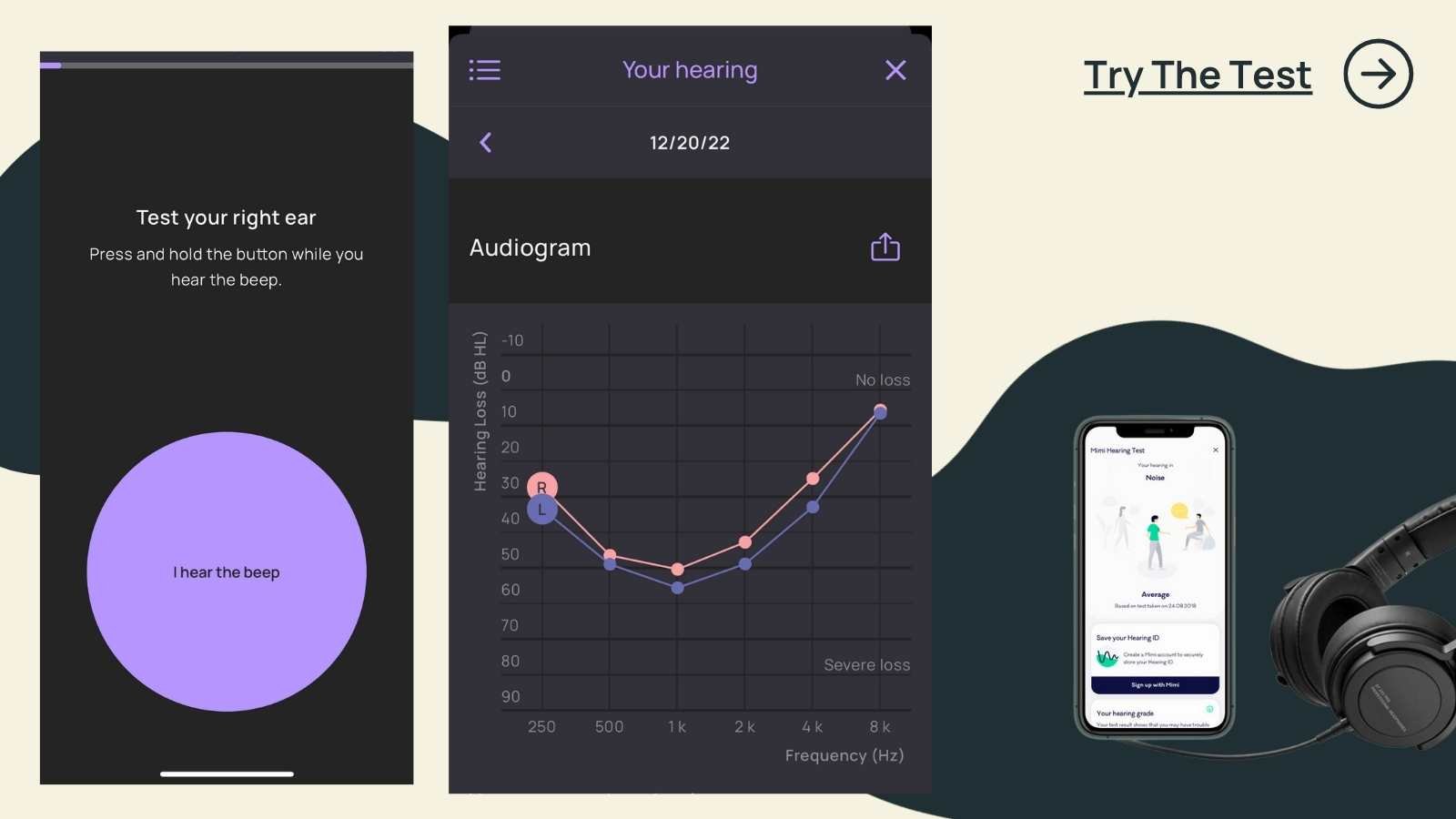
The Mimi hearing test is a smartphone app known for being both thorough and accurate, and it comes in two versions. The first version, called the Pure Tone test, involves playing a tone at various frequencies and asking the test taker to hold a button until they can no longer hear the sound.
The second version, called the Background Noise test, assesses hearing in the presence of background noise. In addition to its comprehensive testing options, Mimi also offers impressive integrations, such as the ability to adjust Apple Airpods to match hearing loss and to adjust the sound quality of smart TVs.
The drawback to Mimi is that the test is only available through a downloaded app on your IOS or Android smartphone.
Try The Mimi Test on Android and iPhone
That's a Wrap
We hope you've found this research useful!
Remember that an online hearing test can't fully replace a test from a doctor, but it can give you useful information to start your process.
If you want to learn more about how to read a audiogram hearing test, check out this breakdown from Dr. Amy Sarow.
Frequently asked questions
Generally yes. Online hearing tests mostly use the same underlying technology as tests administered at a local clinic. The majority of tests play a series of tones at varying frequencies. If you have a decent pair of headphones and a quiet room, you should be able to replicate a booth test closely.
It's worth noting that some more complex tests, like bone conduction testing and tympanometry, cannot be accessed online.
All leading online hearing tests that we reviewed are entirely free of charge. Most tests require an email address to access the final results.
Any good headphones should work well. Bose, Beats, Apple, Sony, Jabra, and others are typically suitable. Avoid cheap or disposable style headphones.
One note, if you've uploaded your audiogram to your AirPods through the Apple Health app, you should turn off personalized audio. More on that process here. If you aren't familiar with this feature, you likely have nothing to worry about.
With your results in hand, you can further research your hearing loss type. Look at our step-by-step crash course to finding the best hearing aids here.
Most people have sloping hearing loss (which gets worse at higher frequencies). You can compare your results to common hearing loss types here.
If you have mild-to-moderate hearing loss, you could be a good candidate for either prescription or over-the-counter hearing aids. If your hearing loss is severe, we suggest you find a local professional to fit you with prescription-level devices.
If you have specific questions, you can always get in touch with our team at hello@soundly.com.
Jabra and Audicus (listed above) can use your online hearing test results to program your hearing aids.
Most local audiologists will request an additional hearing test to verify your results before programming your hearing aids.


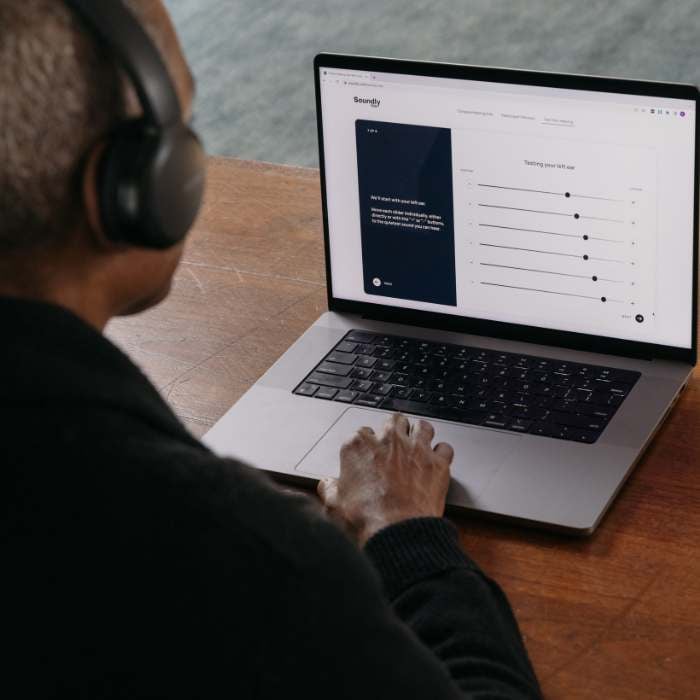

.png)





